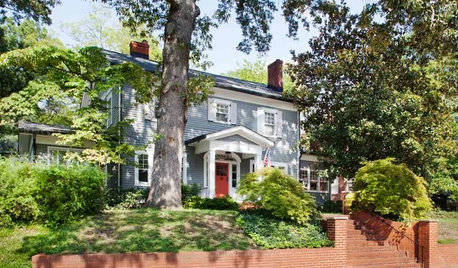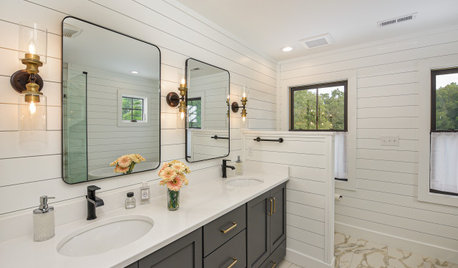I thought I'd start a separate thread on this subject.
It started with Florida Mike showing us that magnificent specimen of Neoregelia silvomontana on his thread entitled "Bromeliad Society of South Florida 2008". Discussion ensued on that plant versus Neoregelia carcharodon. Here is an update on what I have found out since then.
Firstly, the publication already referred to:
Title of book - "Fragments of the Atlantic Forest of Northeast Brazil - Biodiversity, Conservation and the Bromeliads"
Authors - (Thanks for the Portuguese lesson, Lisa! LOL) Junior's full name is Jose Alves Siquiera Filho,
and Elton M.C.Leme.
Published by Andrea Jakobsson Estudio, April 2007 (English edition).
This book cost me AUD$170, ordered through Gil Teague of Florilegium Books, Sydney, Australia. It is an excellent book, very thick, great photos, and lots of official introductory descriptions of new species of many genera - as well as in-depth justifications in scientific jargon of reclassification of some taxa eg Hoh. disjuncta now Aechmea disjuncta, Portea leptantha now Aechmea leptantha. Not recommended for the faint hearted, and my eyes start to gloss over with 'nil comprehendo' at the nitty-gritty disection stuff..... but still very interesting and worth either wading through, or looking at the pretty pictures and summarised text.
Lisa remarked that the 2 photos of N. pernambucana on the fcbs photo index, not only looked different to each other, but the first photo, of a clump, more closely resembled what has been known in the U.S. as N. carcharodon rubra and Olive's plant (shown again) below.
{{gwi:455866}}
and Bruce's photo from fcbs site.
{{gwi:455867}}
The second photo on the fcbs photo index of N. pernambucana looks more like the N. silvermontana shown by Mike, and like Olive's imported N. pernambucana. I agree with your observations, Lisa. For reference, see photo below of Olive's look alike.
{{gwi:455868}}
and Bruce's 2nd photo of N. pernambucana on fcbs site.
{{gwi:455869}}
SO....... I rang Bruce Dunstan, the photographer of both images on the fcbs site, and picked his brains. Bruce is extremely brom-wise, has traveled extensively, and is always generous with his knowledge.
Here goes - (deep breath, flexing muscles).....
The first photograph was taken at Selby Gardens. At the time (unsure when), Harry Luther identified it as N. pernambucana. Since then, Harry has left further investigation to Elton Leme. That plant, probably the same as the commonly known N. carcharodon rubra, is now suspected to be N. gigas (pronounced 'jee-gus'), of the N. pernambucana complex described by Siquiera and Leme.
The second photograph was taken in Brazil, at the nursery of Oscar Ribeiro - Bromeliario Imperialis. At the time of photo taken, this was believed to be N. pernambucana. Now, it is considered to be N. silvomontana, also of the N. pernambucana complex.
Bruce says that the first known person to collect these neoregelias in the wild was Pedro Nahoum of Brazil, possibly in the mid to late 1980s. They were fairly wide spread in the wild, and included the variants that are known as N. carcharodon Tiger, Rainbow, Silver, Giant, rubra etc., but N. Macho was probably collected in the wild independently by R.L.Frasier. It is likely that the differences occurred as natural hybrids within the complex.
Then along came Chester Skotak and Dennis Cathcart, who visited Pedro Nahoum in Brazil, and purchased all the varieties Pedro had collected, and took them back to Tropiflora nursery as N. carcharodon varieties. From there, Chester started hybridising with some of them - creating the shark series of large, broad-leaved, variegated hybrids with large "teeth", and subsequent hybrids.
I found out that Olive most likely imported her (supposed) N. pernambucana from Michael Kiel. At the time Olive imported it (about 2 or 3 years ago?), that was its name on Michael's list. It is now considered to be N. silvomontana, just like the one named that, and on show recently, in South Florida and photographed by Mike.
Phew!..... I think that is how the story goes anyway. Apologies to anyone concerned if I've stuffed up.
Here in Oz, a trio of dedicated brom folk - Bruce Dunstan, Peter Tristram, and Mark Paul - have brought back from their travels all of these varieties, and are growing them side by side, always comparing notes and observations. Peter is pulling the flower parts apart, trying to ascertain difinitive identification according to Leme's detailed descriptions. There appears to be an issue with the leaf width of the N. pernambucana complex which they are trying to nut out.
That trio is doing the same thing with alcantarea species and their variants, having collected seed and imported live plants and now closely monitoring possible discrepancies. Good on them, I say!
Lisa - I found your input very interesting and informative. Thanks! I didn't realise there was initial confusion between N. carcharodon and N. pascoaliana. I think that may have been sorted out before N. pascoaliana got to Australia. You're close observations of all those photos were pretty spot on - well done.
Well I think that's it from me - for the moment...LOL!
I realise most of this "magnum opus" will be boring as hell to many - sorry..
bedah bedah bedah....that's all folks!
Cheers,
Kerry
















mike4284m
LisaCLV
Related Professionals
Burlington Landscape Contractors · Byram Landscape Contractors · Huntington Landscape Contractors · Lynn Landscape Contractors · Mastic Beach Landscape Contractors · New Berlin Landscape Contractors · Oklahoma City Landscape Contractors · Tuscaloosa Landscape Contractors · Vashon Landscape Contractors · Branford Fence Contractors · Brooklyn Fence Contractors · El Monte Fence Contractors · Goose Creek Fence Contractors · Kenosha Siding & Exteriors · Waterford Siding & Exteriorskerry_t_australiaOriginal Author
LisaCLV
kerry_t_australiaOriginal Author
winterlager
LisaCLV
hotdiggetydam
frangipani_56
frangipani_56
fdnpedro
fdnpedro
dooleybugs01